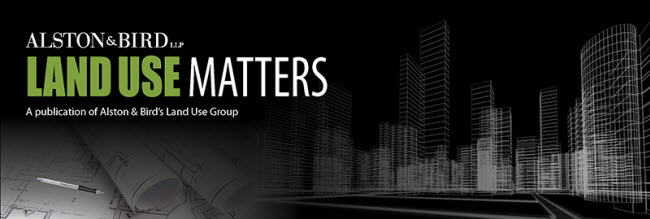
California High Court Holds a Potentially Significant Environmental Effect Alone Does Not Trigger the Unusual Circumstances Exception to CEQA’s Categorical Exemptions
Yesterday, the Supreme Court of California reversed the appellate court’s decision in Berkeley Hillside Preservation v. City of Berkeley (Case No. S201116), holding a project’s potential for a significant environmental effect alone is not enough to apply the unusual circumstances exception to CEQA’s categorical exemptions. The court also clarified that reviewing courts should apply different standards of review to an agency’s two-part inquiry of whether the unusual circumstances exception applies to a particular project.
At issue in this case was the City of Berkeley’s approval of a permit application to build a 6,478 square foot house with an attached 3,394 square foot 10-car garage. The proposed project site is on Rose Street in Berkeley, on a steep slope in a heavily wooded area. The city found the project was exempt from CEQA review, relying on certain allotted exemptions from CEQA’s requirements.
Generally, agencies may find projects are exempt from CEQA if those projects fall within certain classes of exempt projects. CEQA also provides exceptions to those exemptions, and if those exceptions apply, those projects may no longer fall within a categorical exemption. In this case, the City of Berkeley relied on two categorical exemptions when it first approved the project in 2010: (1) the Class 3 exemption for “new, small facilities or structures,” including “[o]ne single-family residence, or a second dwelling unit in a residential zone”; and (2) the Class 32 exemption for “in-fill development” that meets certain conditions and will be built on land within the city that is “no more than five acres [and is] substantially surrounded by urban uses.” (CEQA Guidelines §§ 15303, 15332.)
After losing at the trial court, opponents of the project argued before the 1st District Court of Appeal that the categorical exemptions should not apply to the project because its unusual size, location, nature and scope would have significant environmental impacts on its surroundings. Opponents argued the project was four times the average house size in the vicinity and submitted an opinion from an architect and geotechnical engineer concerning the project’s potential impacts due to its construction on a slope. In response, the city pointed to evidence of residences comparable in size in the vicinity of the proposed project and to the opinion of its own geotechnical engineer concerning the project’s potential environmental impacts.
The court of appeal agreed with the project’s opponents and invalidated the city’s project approval, holding an exception to CEQA’s categorical exemptions applied. The court of appeal relied on the exception that states “[a] categorical exemption shall not be used for an activity where there is a reasonable possibility that the activity will have a significant effect on the environment due to unusual circumstances.” (CEQA Guidelines § 15300.2 (c).) Under the opponents’ and the court of appeal’s reasoning, the project’s potential significant effect on the environment was itself an unusual circumstance that removed the project from CEQA’s categorical exemptions.
The supreme court agreed with the city and the project’s supporters concerning the two-part inquiry in the unusual circumstances exception. The court held that a potential environmental effect must be due to unusual circumstances for the exception to the categorical exemption to apply and that the potential for an environmental effect itself is not an unusual circumstance. Relying closely on the language of Section 15003.2 and other sections in the CEQA Guidelines, the court stated that if a potential significant impact on the environment served as an “unusual circumstance,” the categorical exemptions in practice would serve no purpose and would apply only when a project has no evidence of potentially significant impacts. Projects with no evidence of significant environmental impacts already do not require further CEQA review. (CEQA Guidelines § 15061(b).)
The supreme court also held that a reviewing court should apply two standards of review to different prongs of an agency’s application of the unusual circumstances exception to CEQA’s categorical exemptions. First, an agency’s determination as to whether unusual circumstances are present is reviewed under a standard deferential to the lead agency, namely, whether substantial evidence in the administrative record supports that determination. Second, an agency’s finding as to whether an unusual circumstance gives rise to “a reasonable possibility that the activity will have a significant effect on the environment” is reviewed under a fair argument standard. The supreme court applied this two-pronged approach because an agency’s determination of unusual circumstances is a factual question that should be reviewed for substantial evidence. When an agency moves to the next part of its inquiry, however, the court noted the agency has not yet reviewed the environmental effects of those unusual circumstances. Accordingly, the agency must evaluate whether a fair argument can be made that those unusual circumstances will lead to potential environmental impacts, and judicial review is limited to determining whether the agency applied that standard in a manner required by law.
The supreme court’s decision closes one potential avenue that could have severely tightened agencies’ authority to find that projects fall within CEQA’s categorical exemptions. A different opinion from the supreme court could have made countless small scale projects subject to CEQA challenges. Instead, the supreme court recognized the legislature intended many of those projects to be exempt from CEQA’s requirements.
The supreme court’s full opinion can be downloaded here.
This publication by Alston & Bird LLP provides a summary of significant developments to our clients and friends. It is intended to be informational and does not constitute legal advice regarding any specific situation. This material may also be considered attorney advertising under court rules of certain jurisdictions.
